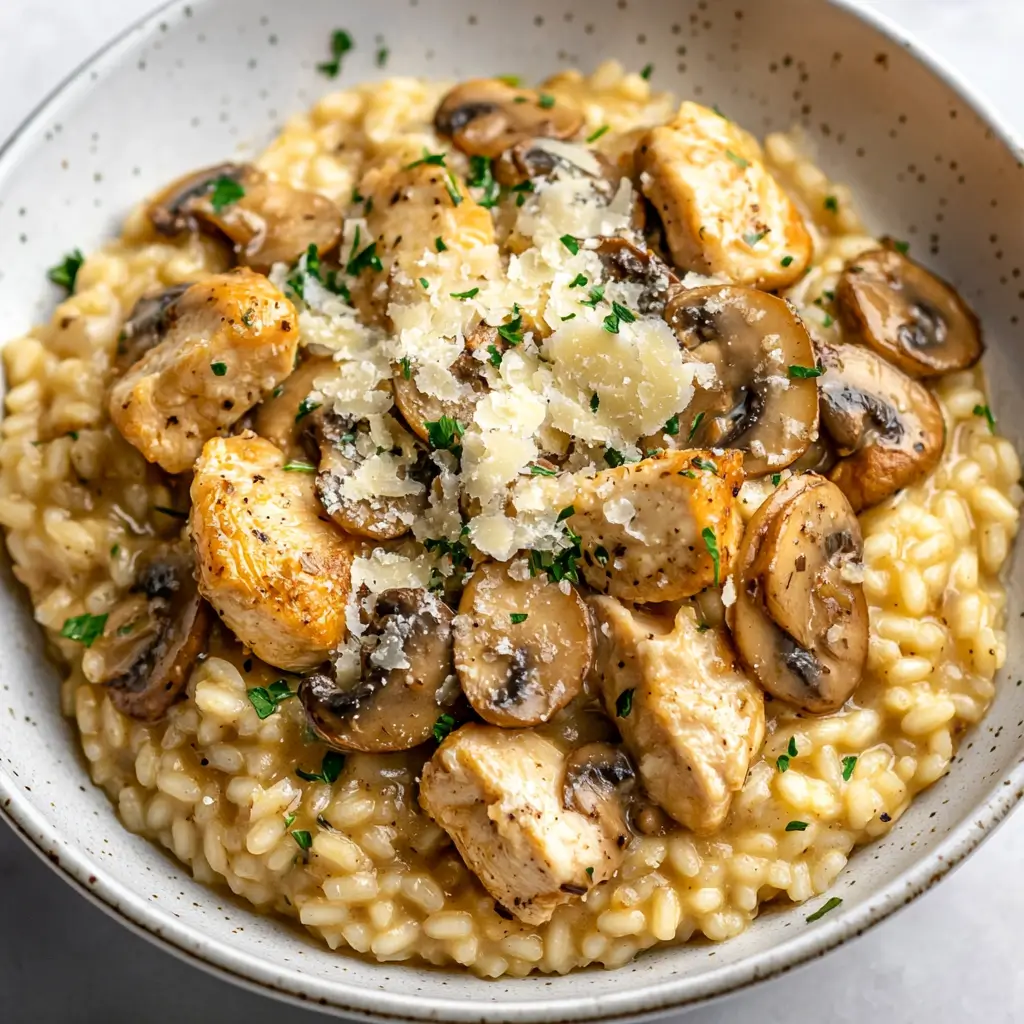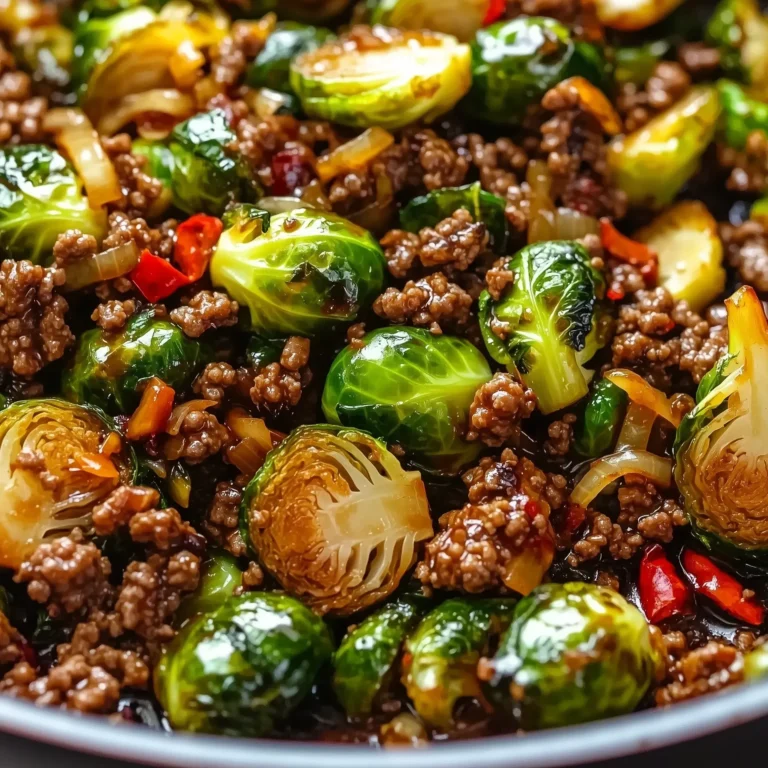Follow Me On Social Media!

There’s something magical about a perfectly cooked risotto. With its creamy texture, rich flavors, and comforting aroma, this dish has earned its place as a staple in Italian cuisine and in the hearts of food lovers worldwide. One of the most beloved variations is the Creamy Mushroom and Chicken Parmesan Risotto—a harmonious marriage of earthy mushrooms, tender chicken, and nutty Parmesan cheese.
Whether you’re an Italian food enthusiast or a home cook looking for your next crowd-pleaser, mastering this dish offers both a culinary challenge and immense reward. Keep reading to learn all about its history, preparation, serving tips, and ways to make it truly your own.
What Makes Risotto Special?
A Brief History
Risotto traces its roots back to Northern Italy, where the humid climate of the Po Valley provided the perfect conditions for cultivating short-grain rice like Arborio. Over time, risotto evolved into a symbol of Italian culinary artistry, with its labor-intensive yet incredibly satisfying cooking technique.
Chef Giada De Laurentiis perfectly captures its essence when she says, “Risotto is a labor of love, but the results are always worth it. The creamy texture and deep flavors from the slow cooking process make it a classic.”
A Beloved Dish for Home Cooks
What sets risotto apart is its versatility. It’s a dish that can transform with the seasons—light and fresh in the spring, hearty and comforting in the winter. And while it might seem intimidating, risotto allows for creativity and personalization, making it a favorite among home cooks and foodies alike.
Variations and Customizations
Make it Your Own
Risotto is a “blank canvas,” as Food Network’s Mario Batali puts it, allowing chefs to mix and match ingredients.
- Vegetarian Delight: Add asparagus, peas, or butternut squash for a veggie-forward dish.
- Seafood Twist: Swap chicken for shrimp, scallops, or lobster for a luxurious variation.
- Spicy Kick: Add a pinch of red pepper flakes or some spicy Italian sausage for bold flavors.
- Seasonal Ingredients: Incorporate truffle oil in winter or fresh basil in summer for a seasonal touch.
Serving Suggestions and Pairings
How to Serve
For a restaurant-quality presentation, scoop the risotto onto a shallow plate. Use the back of your spoon to create a small crater and top with fresh Parmesan, parsley, or even a drizzle of truffle oil.
Wine Pairings
- A crisp Pinot Grigio or Sauvignon Blanc beautifully complements the buttery and earthy notes of the dish.
- Prefer red wine? Opt for a light-bodied Pinot Noir to avoid overpowering the risotto’s flavors.
Health Considerations and Nutritional Info
Risotto is indulgent but offer a mix of nutrients thanks to its combination of protein, carbohydrates, and optional vegetables.
Healthier Swaps:
- Use brown Arborio rice or quinoa for added fiber.
- Reduce the butter or substitute with olive oil.
- Add more fresh vegetables to boost vitamins and minerals without overloading the dish with calories.
Storage and Reheating Tips
Risotto is best enjoyed fresh, but leftovers can still be delicious with proper care.
- Store in an airtight container in the fridge for up to 3 days.
- When reheating, add a splash of chicken stock or water to loosen the consistency and gently warm it on the stove. Avoid reheating in the microwave to prevent a gummy texture.
Why Creamy Mushroom and Chicken Parmesan Risotto is Worth It
From its rich Italian heritage to its versatility and comforting flavor, Creamy Mushroom and Chicken Parmesan Risotto captures the heart of home cooking. Its balance of textures and flavors makes it a dish that everyone around your table will enjoy.
But what makes this dish truly special is the love and patience it requires. It’s a meal that invites you to slow down, immerse yourself in the process, and savor every bite.
The Basics: Ingredients and Preparation
To replicate the magic of Creamy Mushroom and Chicken Parmesan Risotto, you’ll need the right ingredients and proper technique. Here’s a breakdown:

Creamy Mushroom and Chicken Parmesan Risotto
Ingredients
Equipment
Method
- Step 1: In a large skillet, melt butter with olive oil over medium heat. Sauté onion and garlic until fragrant and softened.
- Step 2: Add mushrooms and cook until they release their juices and become tender, about 5 minutes.
- Step 3: Stir in Arborio rice and toast for 1–2 minutes until the edges are translucent.
- Step 4: Pour in the white wine (if using) and stir until fully absorbed.
- Step 5: Add warm broth one ladle at a time, stirring constantly and letting the rice absorb the liquid before adding more.
- Step 6: Halfway through cooking, stir in the diced cooked chicken. Continue adding broth and stirring.
- Step 7: Once the rice is creamy and al dente (after about 20 minutes), stir in grated Parmesan. Season with salt and pepper to taste.
- Step 8: Garnish with chopped parsley and more Parmesan if desired. Serve hot.
Nutrition
Notes
Tried this recipe?
Let us know how it was!
Pro Tip from Gordon Ramsay: “The key to a great risotto is to get the rice to the perfect consistency, which means it is al dente. You want it to be creamy, but not stodgy.”
FAQ
1. Can I make risotto ahead of time?
While risotto is best enjoyed fresh for its creamy texture, you can partially cook it ahead of time. Cook the risotto until it’s about 75% done, then spread it on a baking sheet to cool. When you’re ready to serve, finish cooking it with stock and your desired ingredients.
2. What’s the key to a creamy risotto?
The magic lies in stirring and adding stock gradually. This process releases the starch from the rice, creating the signature creamy consistency. Using warm stock and toasting the Arborio rice at the beginning also plays a crucial role.
3. Can I use other types of rice?
Traditional risotto calls for Arborio rice due to its starchiness, but you can experiment with Carnaroli or Vialone Nano rice, which also work well. Long-grain or basmati rice won’t yield the same creamy results.
4. Is risotto gluten-free?
Yes, risotto is naturally gluten-free as long as you ensure that all ingredients, such as stock and wine, are free of gluten. Always check packaging if you’re cooking for someone with gluten sensitivity or celiac disease.
5. Can I freeze leftover risotto?
Freezing risotto is not recommended as it can alter the texture. However, you can use leftover risotto to make arancini (Italian rice balls) for a delicious new dish!
6. What’s the perfect texture for risotto?
The ideal risotto is creamy, yet the rice grains should have a slight bite, known as “al dente.” It should not be overly runny or mushy but maintain a cohesive, velvety consistency.
By addressing these common questions, we hope to inspire confidence in recreating this iconic dish. Remember, risotto-making is an art, and with practice, you’ll master it in no time!
Final Thoughts
Mastering the art of risotto is a rewarding culinary endeavor. Whether you’re preparing it for a cozy family dinner or an elegant gathering, this dish has a way of bringing people together with its rich flavors and comforting aroma. Don’t be afraid to experiment with different ingredients, seasonings, and techniques to make the recipe uniquely yours.
Remember, the key to an outstanding risotto lies in patience and the joy of cooking. Take your time, enjoy the process, and celebrate the small victories as you perfect your technique. With each attempt, you’ll grow more confident, and soon you’ll be serving risotto that rivals your favorite Italian restaurants.
Thank you for exploring this recipe with us! We hope it becomes a cherished dish in your culinary repertoire. Bon appétit!









